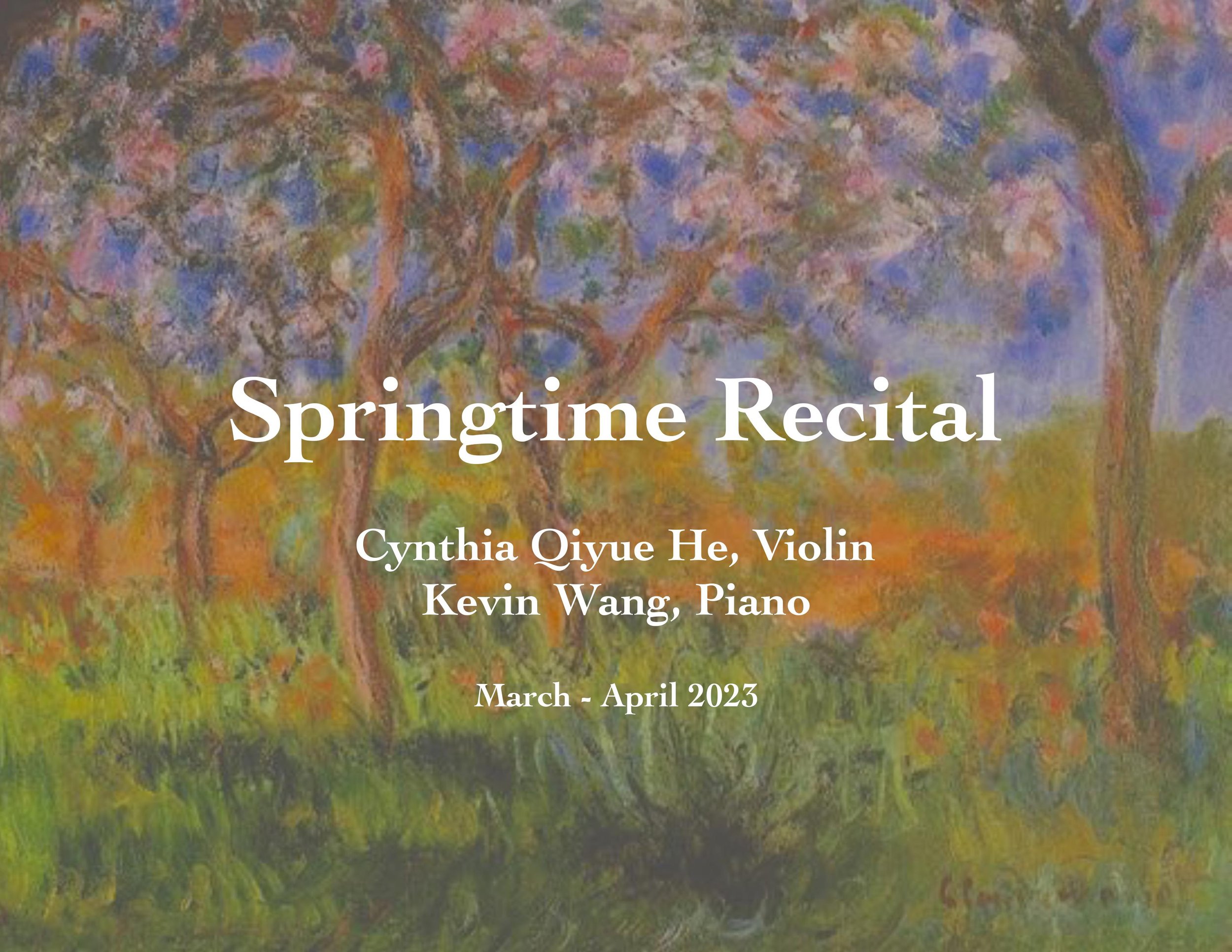Program Notes
D’un matin de printemps (of a Spring Morning) - Lili Boulanger
For a piece about spring, “D’un matin de printemps” may sound rather disorienting to an unsuspecting audience. Despite having terms like happy, gay, and enthusiastic written across the score, the piece will come across as cold and ominous to most ears. The truth is, this work was written near the end of composer Lili Boulanger’s short,disease-ridden life — she was 24 when she died. She had been widely regarded as the most talented composer of her era, effortlessly winning the most prestigious competition at the time (the Prix de Rome) with large works for choir and orchestra. Boulanger’s immense talent, mixed with her poor health, led her to write in a unique style that combined sheer mastery of form and texture with often sinister overtones. Her joy here is from the heart, but such a piece could only come from a life experience like hers.
Suite After Themes, Fragments and Pieces by Giambattista Pergolesi - Igor Stravinsky
Why on earth would Igor Stravinsky, the most cutting-edge composer of the early 20th century, suddenly pay an affectionate homage to early Italian Baroque music? Well, he initially opposed the idea when ballet impresario Sergei Diaghilev commissioned him to write a ballet based on music by Giambattista Pergolesi. But when he began studying these old scores, Stravinsky found a new musical path that would inspire many of his later works, often looking into the past to pave the way of the future. This here suite is a fiendishly difficult arrangement of excerpts from that same ballet — titled Pulcinella. There is a more streamlined version of the same suite that most violinists know and play, but the version we are performing today is more virtuosic, whimsical, and entertaining. (Later historians discovered that many of these themes, fragments and pieces were, in fact, not by Pergolesi, but by other Italian composers. However, the name still stands.)
Sonata No. 4 for Solo Violin - Eugène Ysaÿe
Eugène Ysaÿe loved Bach. Eugène Ysaÿe loved the violin. He unabashedly showcases his love for both in his collection of 6 violin sonatas, but never succumbs to either. Where a lesser composer would lose their identity while trying to service some instrumental gimmick or imitate another artist, Ysaÿe maintained a firm integrity that led him to become one of the most frequently performed composers for the violin. The 4th sonata drags us head first into its world, filled with passion and intensity. The 2nd movement begins with the purest pizzicato (plucking of the string) one will ever hear. The finale brings back elements from the previous 2 movements and closes with a rousing finish.
Journée de printemps (Spring Day) - Gabriel Dupont
This pair of pieces by Dupont resembles both a painting and a quilt. Painting, because they take us right into nature in all of its colorful detail; quilt, because the melodies interweave and repeat in different registers, different textures, and (the two) different instruments. Normally, music that focuses on interweaving lines tend to feel abstract and cerebral, but here, the painting and the quilt coexist, never intruding on each other. It becomes quite baffling, then, that Dupont’s music has been neglected by most musicians. We hope to convince you that he was one of the greats. Near the end of the second movement, Dupont writes a mystifying phrase for the pianist’s left hand:“angelus lointain (distant angel)”.
Theme and Variations - Olivier Messiaen
“Theme and Variations” was Messiaen’s wedding gift to Claire Delbos, his first wife and a violinist herself. It is a celebration of their matrimony in Messiaen’s own musical language. He saw colors in the harmonies he wrote, and these are the colors of love. Through a songlike theme and 5 variations, he celebrates their bond, while anticipating their life ahead, not afraid to express the passionate and sensual side of what is to come.
Valse-Caprice No. 2 for Solo Piano, Op. 38 - Gabriel Faure
The title “Valse-Caprice” is a fusion between a waltz and a piece that reinvents itself whenever it wants to (think the word ‘capricious’). During a time when the French people were obsessed with long and episodic waltzes that can be danced by couples until they tire out, Faure wrote his 4 Valse-Caprices to mimic the length of these waltzes, while also employing drastic tempo changes and mood shifts, each time as if on a whim. These pieces cannot be danced to, but will ignite the listener’s imagination as their multiple layers reveal themselves gradually. The 2nd of these works is by far the catchiest, always checking in with the audience’s comfort zone before launching into uncharted territory — much like how we programmed this recital.
Tzigane — Concert Rhapsody - Maurice Ravel
“Tzigane” is the French word for Hungarian gypsy. Many pieces for the violin have been written to capture the nomadic spirit of gypsies, while also employing their idiosyncratic scales and rhythms. Ravel’s take on this cultural homage is unique in that it pushes the instrument to its fullest potential for expression, each section meticulously calculated to dazzle and surprise the audience, while on the whole sounding completely improvised. Watch at the beginning to see an entire section played on the lowest string of the violin, before the music breaks free into passages of double, triple, and quadruple notes. Eventually the piano comes in, and the two instruments often blend together as if they are the same. By its final chord, ‘Tzigane’ will have completely lived up to its subtitle — a rhapsody through and through.
